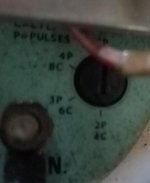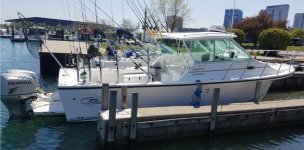gentilebrian
Contributing Member
2005 BF225
Currently my RPM Gage has a needle and a digital hour meter in it. The gauges seem to stick and not read the correct RPM's. One doesn't go below 2,000.
I slow troll for salmon so very small throttle increments adjusting the speed by as little as 0.2mph can make the difference of 1 fish or 10 fish. we troll from 1.8mph to 3mph. So a accurate RPM gauge would make small throttle adjustments so much easier because I cant really hear the motors change RPM's so it takes a long time to get it right.
I guess my option is either to get new gauges OR do they make a gauge that has a digital readout for RPM's OR can I tie it into my Raymarine MFD somehow to show the RPM's on there?I would consider getting a second display if I could display the engine data.
Also is there a way to get the Fuel usage from the motor?
Currently my RPM Gage has a needle and a digital hour meter in it. The gauges seem to stick and not read the correct RPM's. One doesn't go below 2,000.
I slow troll for salmon so very small throttle increments adjusting the speed by as little as 0.2mph can make the difference of 1 fish or 10 fish. we troll from 1.8mph to 3mph. So a accurate RPM gauge would make small throttle adjustments so much easier because I cant really hear the motors change RPM's so it takes a long time to get it right.
I guess my option is either to get new gauges OR do they make a gauge that has a digital readout for RPM's OR can I tie it into my Raymarine MFD somehow to show the RPM's on there?I would consider getting a second display if I could display the engine data.
Also is there a way to get the Fuel usage from the motor?



